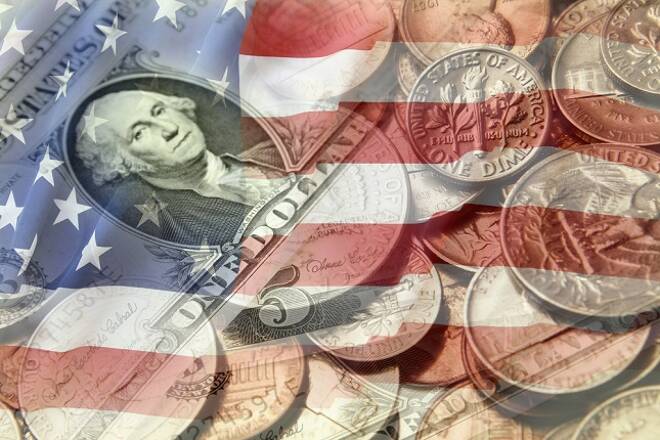Advertisement
Advertisement
Dollar Falls as Demand for Risk Rises as New Tariffs Not as Bad as Previously Feared
By:
The major U.S. equity indexes are trading higher shortly after the cash market opening on Tuesday as the latest tariffs on U.S. and Chinese goods failed to lead to lead to knee-jerk selling as anticipated during the pre-market trade. U.S. Treasury yields were trading mixed when the news came out this morning. However, shortly after the stock market opening, yields are trading higher. The U.S. Dollar is trading lower against most major currencies except the Japanese Yen despite rising Treasury yields which tend to drive up demand for the greenback
The financial markets are showing almost no response to the news that China will institute new tariffs of U.S. goods worth $60 billion, according to a Reuters report. The new tariffs of between 5 percent and 10 percent will be placed on a list of 5,207 U.S. products on September 24.
The new tariffs are in retaliation for Monday’s actions by the U.S. Yesterday, President Trump’s administration announced it will impose 10 percent tariffs on about $200 billion of imports from China effective September 24. Trump also said that if a new trade deal isn’t in place before the end of the year, the tariffs would rise to 25 percent on January 1, 2019.
U.S. Economic News
In other news on Tuesday, a report released by the National Association of Home Builders (NAHB) said homebuilder confidence in the U.S. remained firm in the month of September.
The report said the NAHB/Wells Fargo Housing Market Index came in at 67 in September, unchanged from August. Economists had expected the index to edge lower to 66.
“Despite rising affordability concerns, builders continue to report firm demand for housing, especially as millennials and other new comers enter the market,” said NAHB Chairman Randy Noel.
Noel added, “The recent decline in lumber prices from record-high levels earlier this summer is also welcome relief, although builders still need to manage construction costs to keep homes competitively priced.”
U.S. Equity Markets
The major U.S. equity indexes are trading higher shortly after the cash market opening on Tuesday as the latest tariffs on U.S. and Chinese goods failed to lead to lead to knee-jerk selling as anticipated during the pre-market trade. The price action suggests the new tariffs by the U.S. and the retaliatory move by China had been priced into the market, or they were not as bad as previously feared.
Prior to the U.S. announcement, some traders felt the U.S. would impose the full 25 percent tariff from the get-go instead of the 10 percent that was announced. As far as China was concerned, some traders felt the country would try to disrupt the supply chain by placing restrictions on key materials and small components of electrical devices manufactured in the U.S. Some investors also thought that perhaps China would pull out of all trade negotiations.
U.S. Treasury Markets
U.S. Treasury yields were trading mixed when the news came out this morning. However, shortly after the stock market opening, yields are trading higher.
This is important because this is where global money managers go to lay off risk. The positive response in yields suggests that risk is on in today’s session. Fear and uncertainty would’ve driven U.S. Treasury yields lower across all durations. Instead, shortly after the stock market opening, the yield on the benchmark 10-year U.S. Treasury note is at 3.031 and the yield on the 30-year U.S. Treasury bond is at 3.176.
Forex
The U.S. Dollar is trading lower against most major currencies except the Japanese Yen despite rising Treasury yields which tend to drive up demand for the greenback. Driving the dollar lower is the lifting of hedges placed by investors as protection against a market meltdown due to the escalation of the trade dispute between the U.S. and China.
About the Author
James Hyerczykauthor
James Hyerczyk is a U.S. based seasoned technical analyst and educator with over 40 years of experience in market analysis and trading, specializing in chart patterns and price movement. He is the author of two books on technical analysis and has a background in both futures and stock markets.
Advertisement
